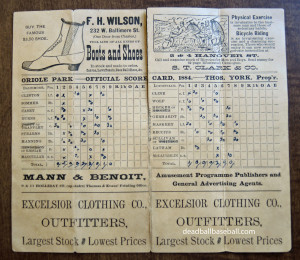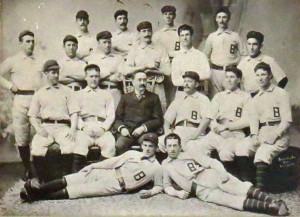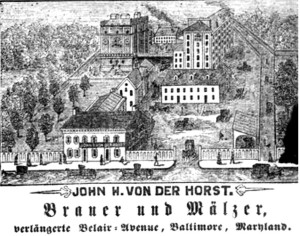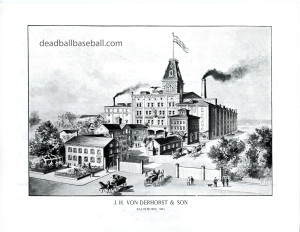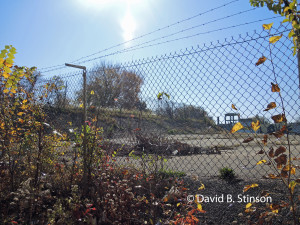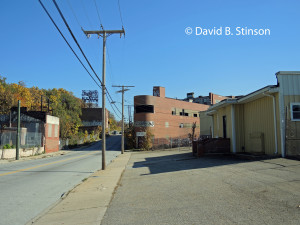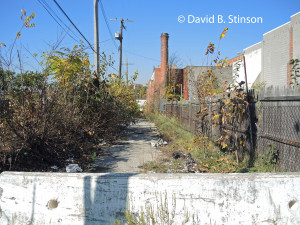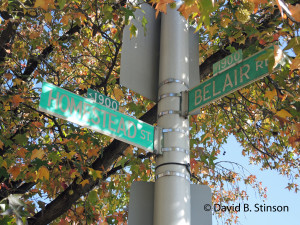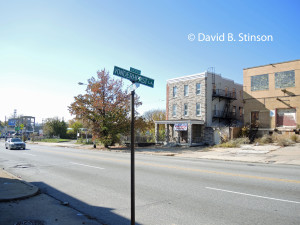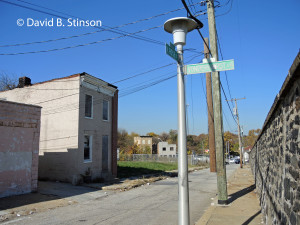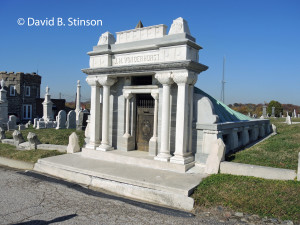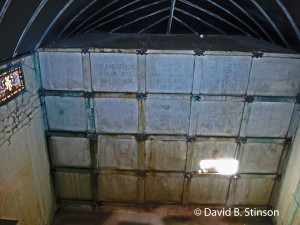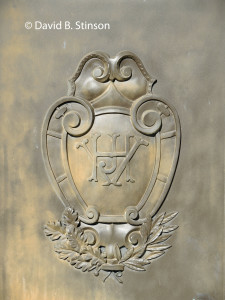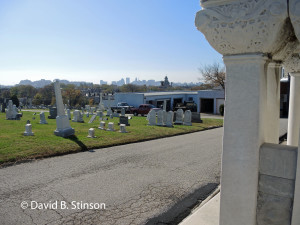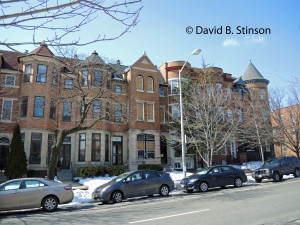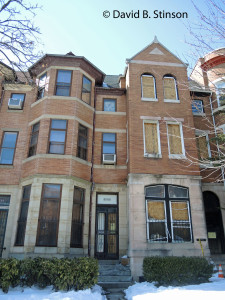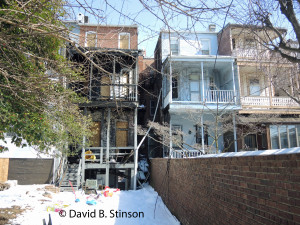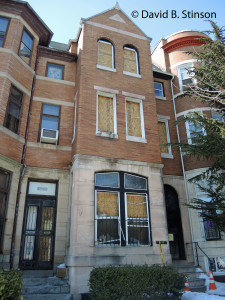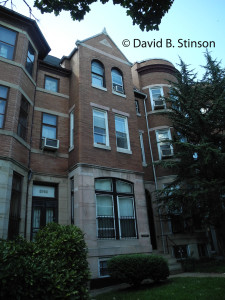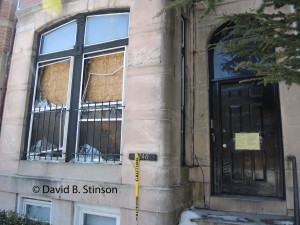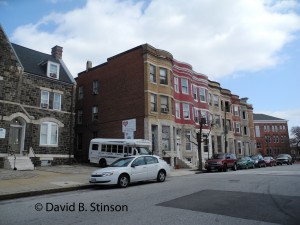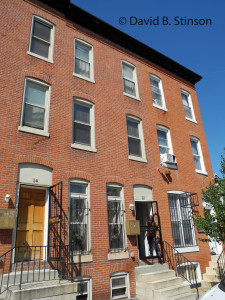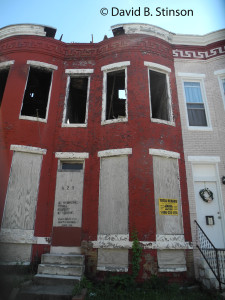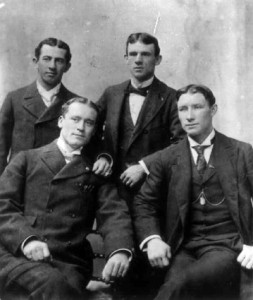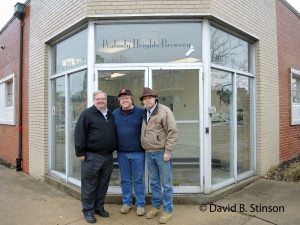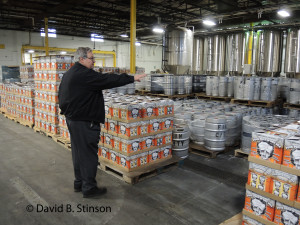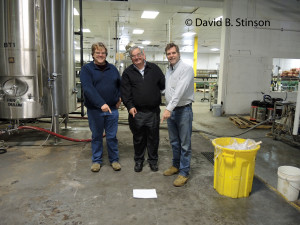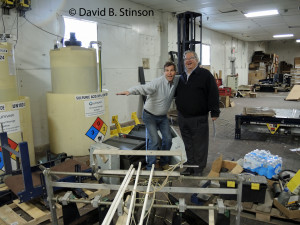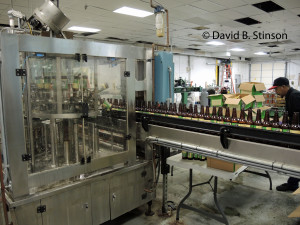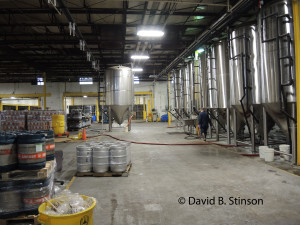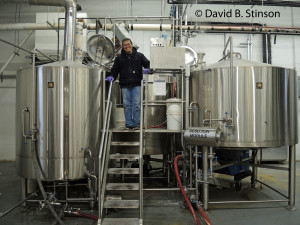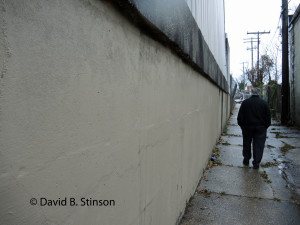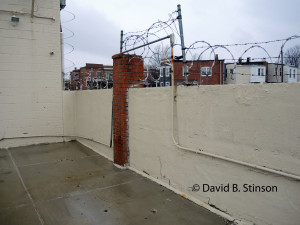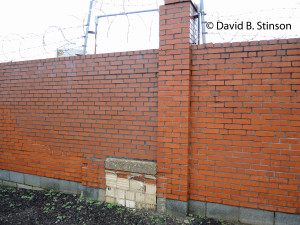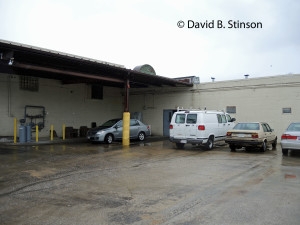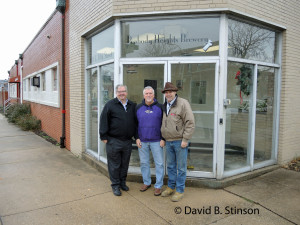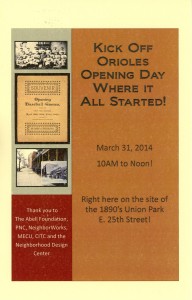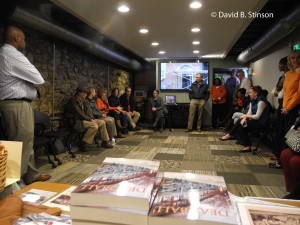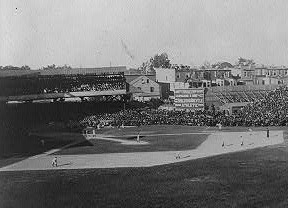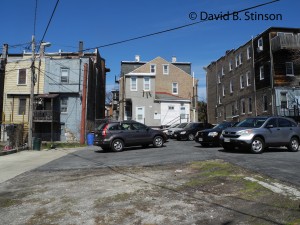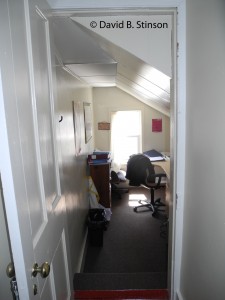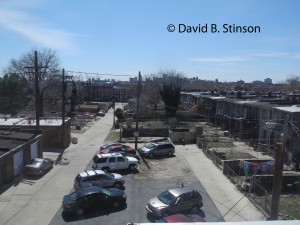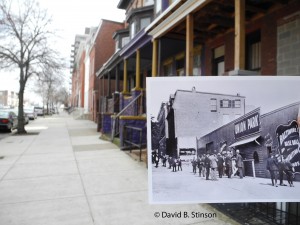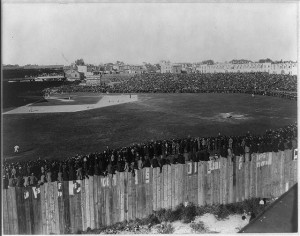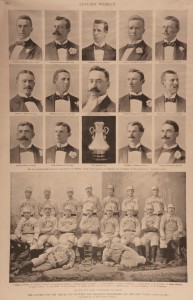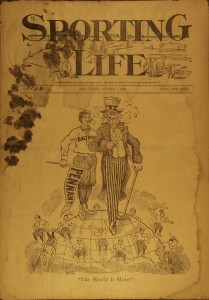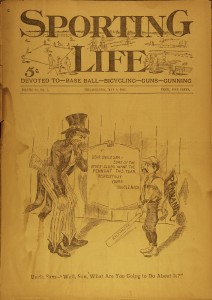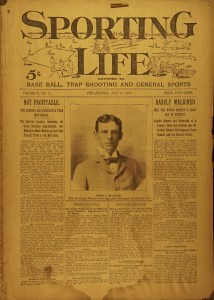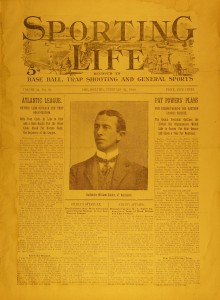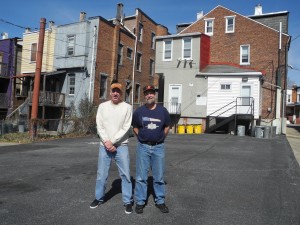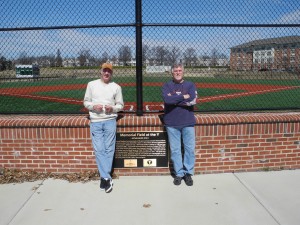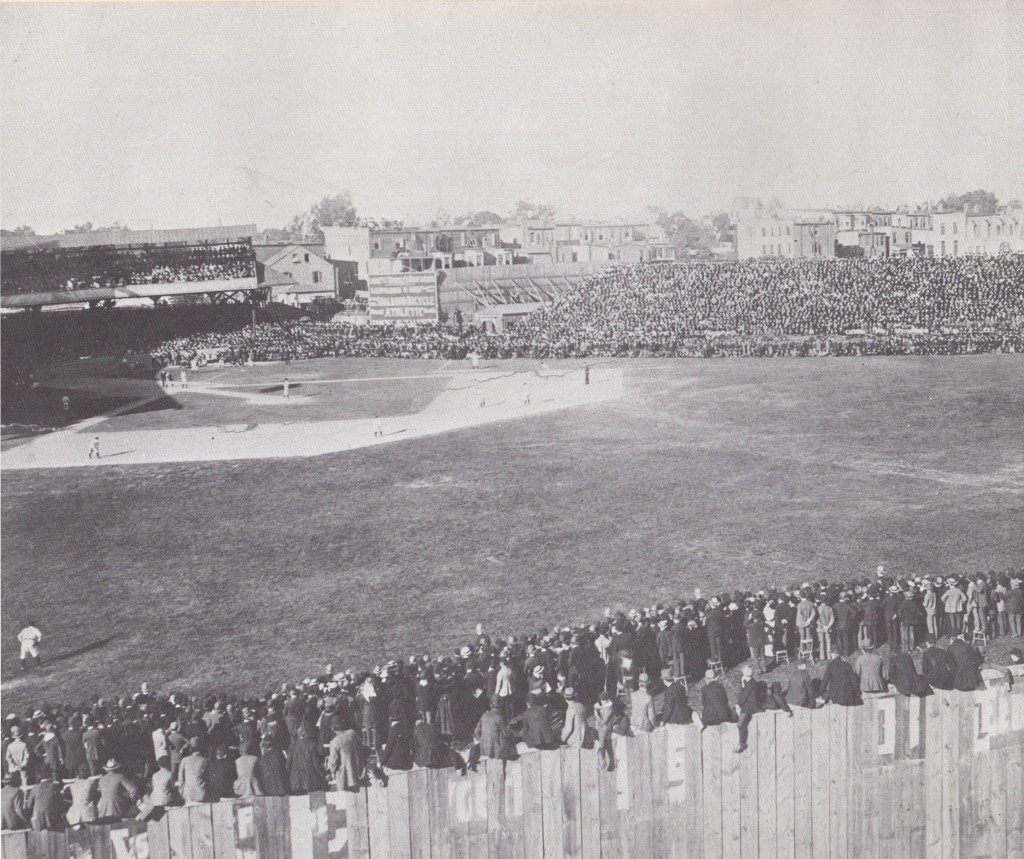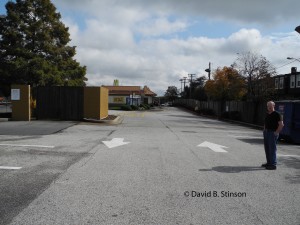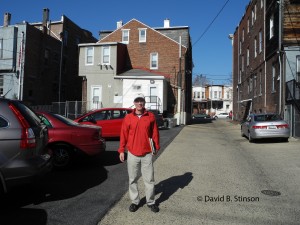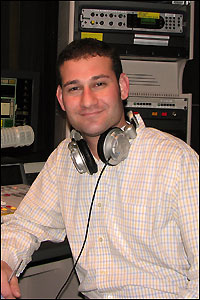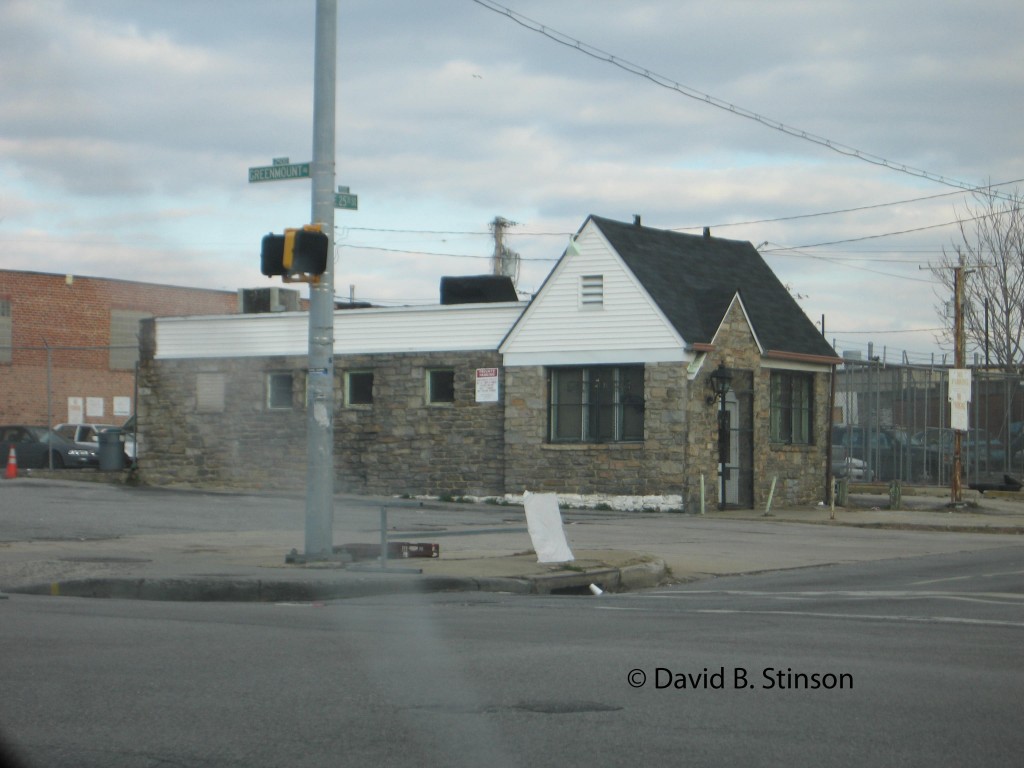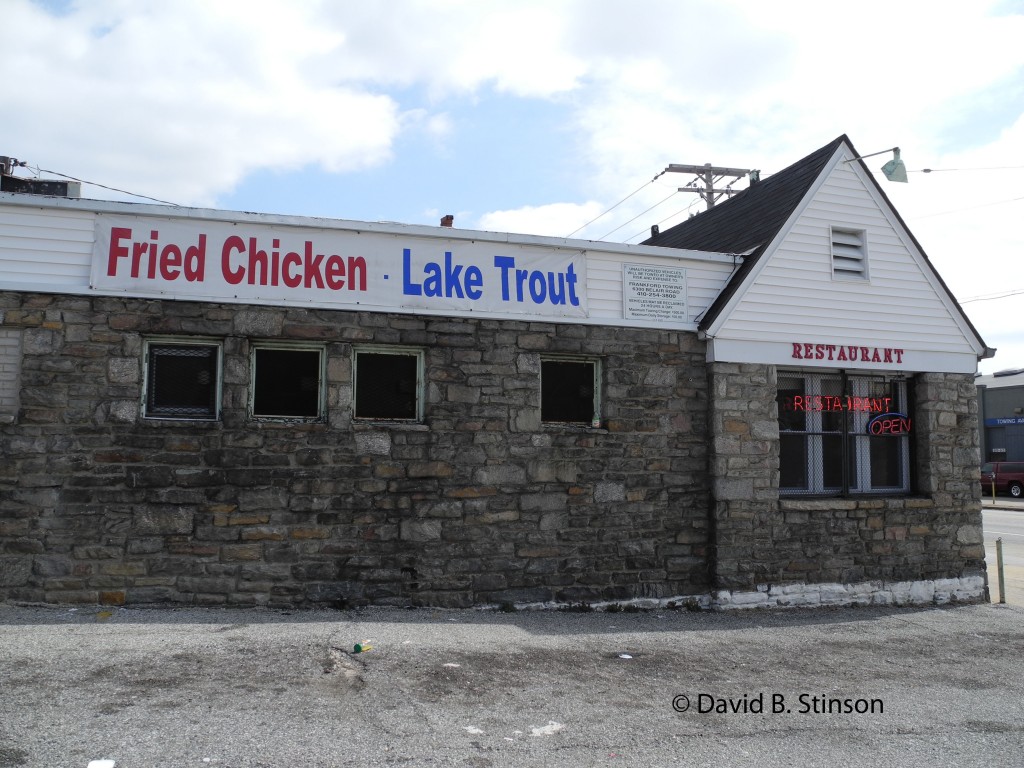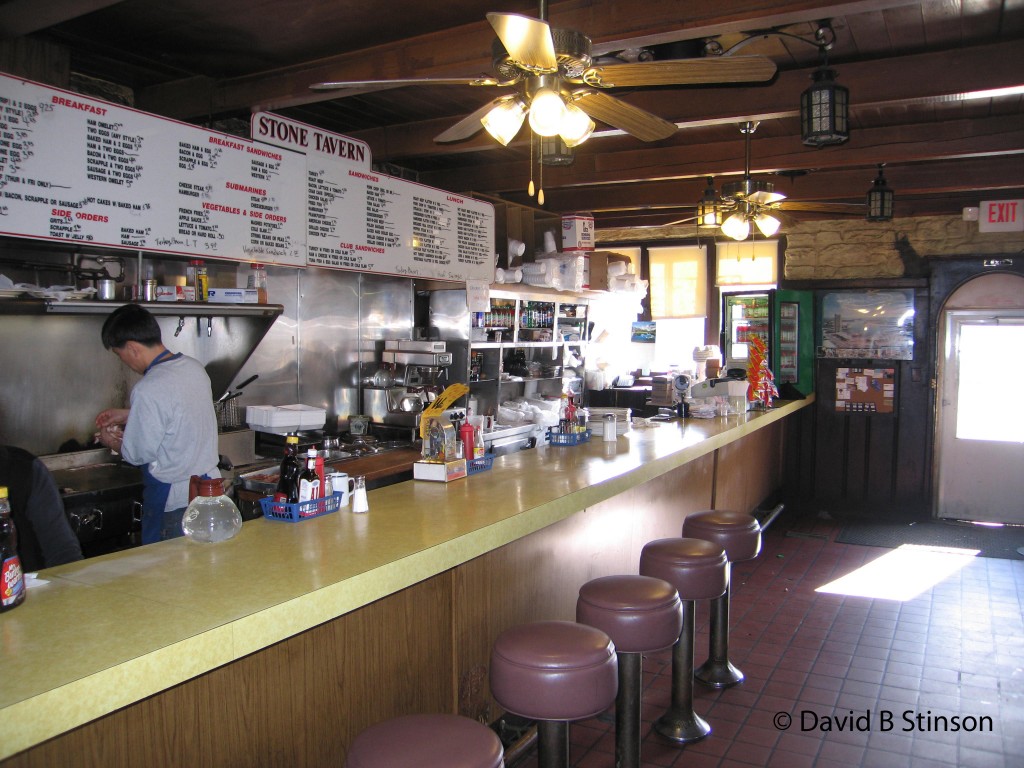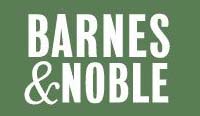The hardscrabble intersection of Belair Road and North Avenue in Baltimore, Maryland, has no marker noting the importance of the area to the history of Baltimore baseball, or to the history of Baltimore beer, for that matter. However, Eagle Brewery and Malt House, which once stood in the northwest quadrant of that intersection, has deep baseball roots.
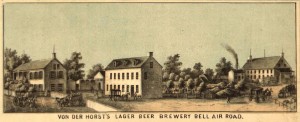
Detail from E. Sachse, & Co.’s Bird’s Eye View of the City of Baltimore, 1869. (Library of Congress) (courtesy Ken Mars)
Built on the former site of Richardson’s Oil Cloth Mill, the brewery was started by John Henry Von Der Horst in 1866 as part of the J. H. Von Der Horst Brewing Company. In 1880, John Von Der Horst gave his son, Henry R. “Harry” Von Der Horst, an interest in the brewery and renamed the company J. H. Von Der Horst & Son Brewing Company. With profits from the Eagle Brewery, Harry Von Der Horst in the early 1880s purchased a franchise in the American Association, a new major league hoping to rival the National League.
Unlike the National League, however, the American Association permitted its franchises to sell beer at their home games. Harry Von Der Horst installed a beer garden in his ballpark and encouraged fans to remain even after the game had ended to consume more beer. Although the American Association Orioles (they were the first professional Baltimore baseball team known as the Orioles) never placed higher than third during their decade in existence, the sale of beer at the games proved quite profitable.
In 1892, with the demise of the American Association, Harry Von Der Horst’s Orioles entered the newly-expanded National League, and just two years later, in 1894, brought Baltimore its first ever professional baseball championship.
Eagle Brewery and Malt House was bounded by Belair Road and Vonderhorst Lane (now Homestead Street) to the East, Sinclair Street to the North, Patterson Park Avenue to the west, and North Avenue to the South.
By the 1880s, Eagle Brewery was one of the largest in the city. According to the book Baltimore: Its Past and Present, A Souvenir Of The 27th Convention of the United States Brewer’s Association (A. Von Degen, 1887), the main brewery building was erected in 1880, was five stories high, and included three large steel boilers.
Eagle Brewery also had its own six-story malt house which produced 100,000 bushels of malt each year, and a five story ice house which provided refrigeration through the use of two DeLaVergne steam-driven ammonia compressors. The brewery’s annual production was 40,000 barrels.
The two drawings above depicts the brewery as it looked fronting Belair Road, just south of what is now Homestead Street (formerly Vonderhorst Lane). The picture below shows that plot of land as it appears today, at the intersection of Belair Road and Homestead Street. The street address is 1920 Belair Road (formerly 10 Belair Avenue Extended).
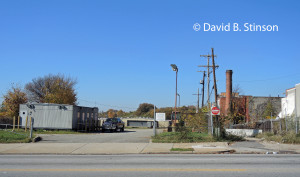
Former Site of Eagle Brewery and Malt House, at intersection of Belair Road and Homestead Street, Baltimore, Maryland
There are no buildings from the Von Der Horst brewery at the site today. A portable building located at the former entrance to the brewery on Belair Street is owned by Power House World Ministries, which also owns several other buildings across from the site on Belair Road.
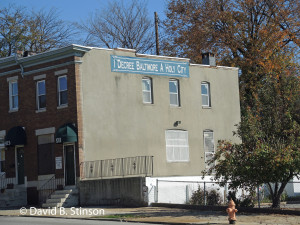
Power House World Ministries Building on Belair Road, Baltimore, Maryland, Across the street from the former site of Eagle Brewery.
On the day I visited the site with Ken Mars, a Baltimore baseball historian, the head of that church, Bishop James A. Winslow, Jr., was whacking weeds on the property. Bishop Winslow hopes to acquire other properties on the block to help fulfill his noble mission of serving those who “are less fortunate and have been beaten down by life.”
Behind the former entrance to the brewery on Belair Road is the Allender Bus Company, located at 2301 Sinclair Lane.
The Allender Bus Company sits on the portion of the property that once included the five story brewery building and the six story malt house.
The tract of land that fronts Belair Road sits at a higher elevation than the tract where Allender Bus Company is located. At about this spot once sat the five-story ice house, which had deep vaults located several stories below ground. One can only wonder what an excavation of this area might reveal.
Running parallel to Homestead Street is the former Goetze Meat Plant. A Baltimore landmark that remains to this day is the large, metal Goetze sign that sits along Sinclair Lane, just south of the railroad tracks.
Homestead Street today is really nothing more than an alley, now closed off and impervious to vehicular traffic.
In 1929, during the height of prohibition, the Baltimore City Council voted to change the name of the street from Vonderhorst Lane to Homestead Lane because local residents did not like the road, or the surrounding area, being linked to the former brewery.
However, perhaps as a homage to the former landmark, the city changed only a portion of the street and left a one block stretch of Vonderhorst Lane east of Belair Road on the map and at the site.
Across the street from the former brewery on Belair Road is a sign for Vonderhorst Lane, which marks a right of way which now is nothing more than an alley.
The eastern end of Vonderhorst Lane terminates at Baltimore Cemetery, which perhaps is appropriate because Baltimore Cemetery is the final resting place for the Von Der Horst family.
In 1894, John Von Der Horst died and was interred in a mausoleum near the entrance to Baltimore Cemetery.
Also interred in the family vault is John’s wife Johanna, and his son John H. Von Der Horst, Jr., and his wife Mary.
After his father’s death in 1894, Harry Von Der Horst inherited a large portion of the brewery and formed Von Der Horst Brewing Company. In 1898, Harry Von Der Horst moved to New York, where he was part owner of the Brooklyn Superbras (which included several former Oriole players, including manager Ned Hanlon). In 1899, Von Der Horst Brewing Company became part of the Maryland Brewing Company, a consolidation of 16 or 17 Baltimore breweries. Harry Von Der Horst retained a share of that company, but eventually sold his shares to the Gottlieb-Bauernschmidt-Strauss Brewing Company. By 1904, Gottlieb-Bauernschmidt-Strauss had ceased making beer at the Eagle Brewery site and leased the former Von Der Horst property to Wilson Distilling Company.
Harry Von Der Horst died in New York in 1905, and is interred in the Von Der Horst vault along with his wife Emma, and his daughters Charlotte and Louise.
As for the former brewery site, during prohibition, the property was used to make alcohol products not intended for human consumption, although stories in the Baltimore Sun talk of bootlegging raids on the premises. In the 1930s, a car dealership, Backus Chevrolet, opened at the site, and in 1938, H.J. Weissner converted the dealership to a used car lot. In the 1980s a Church’s Fried Chicken restaurant was located at the site.

Former Site of Eagle Brewery and Malt House, and Wilson Distilling Company, Belair Road, Baltimore, Maryland
During his time as a baseball executive in Baltimore, Harry Von Der Horst brought the city three baseball championships, in 1894, 1895, and 1896. He also owned and/or helped construct three ballparks to house his teams. The first was Oriole Park (Oriole Park I), known as Huntington Avenue Grounds and American Association Park), at the southeast corner of what is now East 25th Street and Barclay Street. The American Association Orioles played there from 1883 to 1889. The second was Oriole Park II, located at the southwest corner of what is now Greenmount Avenue and East 29th Street, where the American Association Orioles played from 1890 to 1891. The third was Oriole Park III, also known as Union Park and the Baltimore Baseball and Exhibition Grounds, where American Association Orioles played in 1891. The National League Orioles played at Union Park up through the 1899 season.
Baltimore Cemetery sits on one of the highest spots in the City of Baltimore, approximately three miles northeast of Camden Yards, the home of the current Baltimore Orioles. Although the neighborhood has changed dramatically since Harry Von Der Horst’s death, it seems fitting that the city skyline is readily visible from the front steps of the final resting place of the man who first brought together Baltimore baseball and beer.


